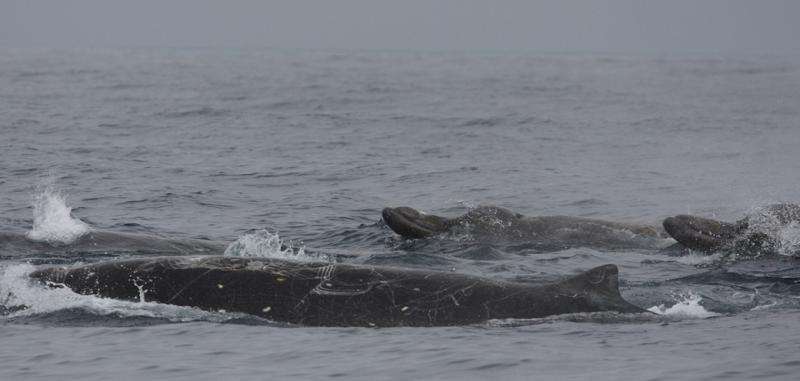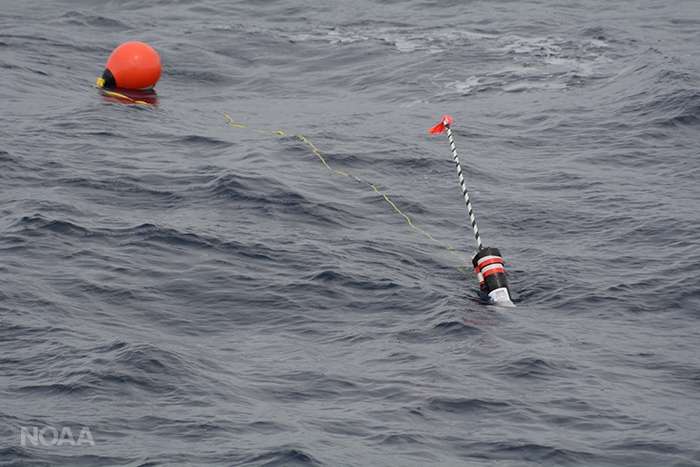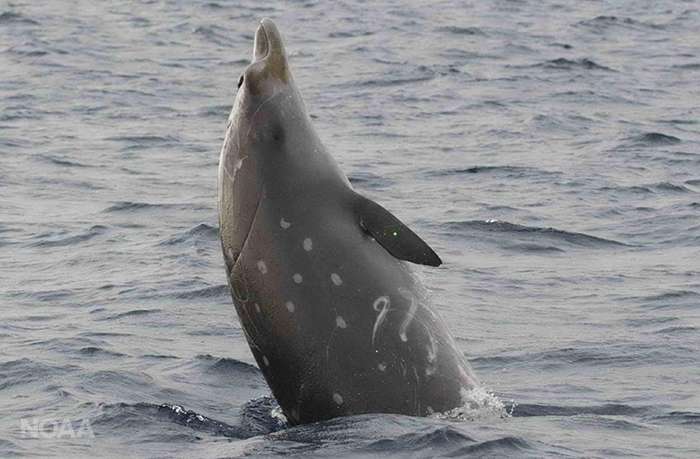Whales might be hidden, but these new buoys can help find them

How do you find whales that dive so deep and spend so little time at the surface that some species have never been observed alive? Sometimes you just have to listen closely.
Thanks to a newly developed system of drifting buoys, scientists from NOAA's Southwest Fisheries Science Center in La Jolla, Calif., will have a much better chance of hearing beaked whales in their deep water habitat off the West Coast.
About 20 buoys will be deployed from NOAA Ship Bell M. Shimada, each with a listening device suspended 330 feet below the ocean surface to record the whales' vocalizations. Over the 20-day deployment, each buoy is expected to drift as much as 10 nautical miles per day and cover 100 to 200 miles over the course of the survey.
The new technology used for the drift buoys has cost-saving benefits, too. "The great advantage of the buoys is that their collective 400 days at sea is like increasing our ship effort by a factor of 10 with very little increase in cost," says Jay Barlow, co-chief scientist of the survey.
Paired with listening devices towed behind the ship and a visual observing team onboard, this survey should provide valuable new data about a group of whales considered to be in decline in the California Current. NOAA scientists estimated that one of the better known species of beaked whales, Cuvier's beaked whales, declined from more than 10,700 individuals in 1981 to 7,500 in 2008.
The cause of the decline remains a mystery. Scientists say potential culprits could be shifting population distributions, changes in the deep-water food web or human impacts such as increasing ocean noise. The data on beaked whale abundance, distribution and vocalization patterns gathered during this research survey will help scientists understand these mysterious whales of the deep, so NOAA and partners can work to protect them—even if we can't see them.
-

Listening buoy deployed off California coast. Credit: NOAA Southwest Fisheries Science Center -

Blainville's beaked whale. Credit: John Durban, NOAA Southwest Fisheries Science Center/Bahamas Marine Mammal Research Organization
Provided by NOAA Headquarters




















